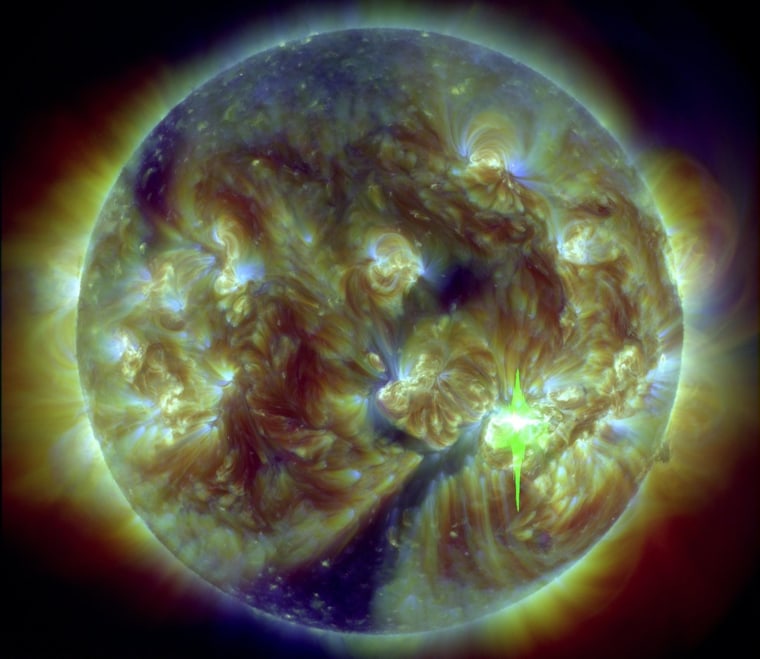The sun fired off a massive solar flare late Friday, after days of strong storms from our nearest star.
The huge solar flare registered as an X1.8-class event, one of the most powerful types of flares possible, and was captured on camera by NASA's powerful Solar Dynamics Observatory. The flare triggered a strong radio blackout for parts of Earth as it peaked Friday at 7:28 p.m. ET, according to an alert from the National Oceanic and Atmospheric Administration's Space Weather Prediction Center.
The solar flare erupted from a sunspot region classified as Active Region 2242, and more sun storms could occur from the region. [Biggest Solar Flares of 2014 in Photos]
"The region remains large and complex," SWPC experts wrote in the update. "More minor to moderate radio blackouts are expected, with an ongoing chance for another strong event."
Friday's solar flare capped an active week of sun storms. Earlier in the week, another active sunspot region called AR 2241 fired off two moderate M-class flares.
X-class solar flares are the strongest solar flares the sun can unleash. When aimed directly at Earth, they can disrupt communications and GPS navigation systems on Earth, and even pose a threat to satellites and astronauts in space.
M-class solar flares are about one-tenth the size of X-class flares, but can supercharge Earth's auroras, or northern lights, resulting in dazzling displays. A huge eruption of solar material — called a coronal mass ejection, or CME — from the earlier M-class flares is expected to trigger geomagnetic storms on Earth, possibly amplifying the northern lights, this weekend.
Friday's eruption sent out a CME as well, but "the bulk of the cloud will sail far south of the sun-Earth line, missing our planet," said SpaceWeather.com's Tony Phillips.
— Tariq Malik, Space.com
This is a condensed version of a report from Space.com. Read the full report. Email Tariq Malik at tmalik@space.com or follow him on Twitter and Google+. Follow Space.com on Twitter, Facebook and Google+.
